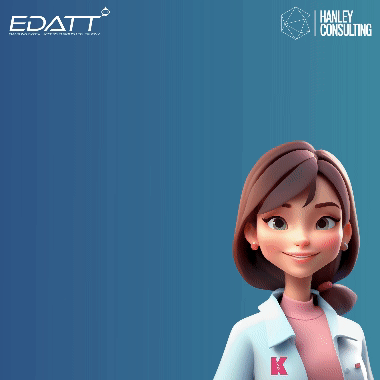In our latest interview we caught up with David Bolton from healthcare analytics specialist Draper & Dash, where we discuss healthcare data science and predictive analytics. We asked David a few questions about the field and how the company’s platform is being adopted across the NHS.
David has been working in the data industry for the past 20 years and has a real passion for how analytics and data science can support healthcare providers. We talk about how these tools are supporting providers through COVID in terms of recovery planning, and preparation and readiness for a potential second wave.
 Can you take us through your Data Science Platform?
Can you take us through your Data Science Platform?
The platform is all about enabling healthcare organisations to simplify and speed up the use of machine learning, artificial intelligence and data science.
We have used our experience in building algorithms and models to help predict and plan patient care, and we have put those models into a centrally managed system. It means when a provider wants to take the next step on their analytics journey to build predictive machine learning models, they can use the system as a bridge between their data systems and their analytics with tried and tested models.
At the moment we’re focused on supporting organisations with what happens next, such as helping with capacity planning or resource management. It’s about planning to get through the waiting lists but also having key metrics and models to use to adapt to an ever-changing situation.
The platform essentially democratises machine learning and artificial intelligence across the health and care eco system. We have over 15 data science models already built into the platform covering use cases like predicting readmissions to length of stay, emergency arrivals, radiology turnaround and waiting list volumes.
What are some of the challenges that are faced in this area?
The single biggest challenge is the availability and cost of healthcare expert data scientists. Building predictive models takes a combined understanding of the hugely complex data stored by health systems and the mathematical modelling used to provide accurate results.
The platform sits across every aspect of an organisation, utilising data from clinical, financial and operational systems; there’s a huge volume of data.
One of the challenges with analytics has always been to connect those systems, and to try and pull the data out to get insights from them. Our platform provides a simple mechanism to extract only the data necessary for the model and to schedule and output the results to the analytics and dashboard layer. So, we are transforming a slow and expensive process, into an automated, proven platform that can deliver results in days.
Could you take me through an example of the how the platform is used?
One example is on readmission. Our model can identify patients who are most likely to readmit after discharge and enable earlier intervention to prevent this happening. Hospitals are already struggling with patient volume (more so after COVID-19), so the ability to flag an early warning sign for likely readmission can save countless unnecessary bed nights and the cost which goes with it.
How is data and analytics being used to support organisations through the pandemic?
During COVID-19 we were quick to develop a model to enable hospitals to predict and manage resources that might be required in the coming weeks.
In the NHS there are not many data science specialists, so it can be expensive to get the resource and it takes a huge amount a time. What we are trying to do is help those organisations move their analytics into data science and machine learning, which is where a lot of the value really exists.
The key here is being able to build capability into the systems that flags an early warning sign so that managing resources as a response can be less impactful than the first time around.
The other area we have supported trusts is with building simulation models. For example, asking the ‘what if questions’, and being able to work on different scenarios that might happen. We have built a model for one health system to plug in ‘what if questions’, such as what if we move 5 resources from elective care to COVID care and to see what impact that could have.
One of the significant impacts of COVID is the knock-on effect to the elective and non-urgent care. We have worked closely with other health systems is to buildout these models to help understand when that work can start. That’s looking at COVID care and resource planning, demand curve forecasting, the ‘Ro’ rate and further to visualise when you can start the recovery process.
The beauty of the platform is really to democratise data science into healthcare by using proven models from 5 years of work, preventing the need to reinvent the wheel for each project and vastly reducing costs and speeding time to value




